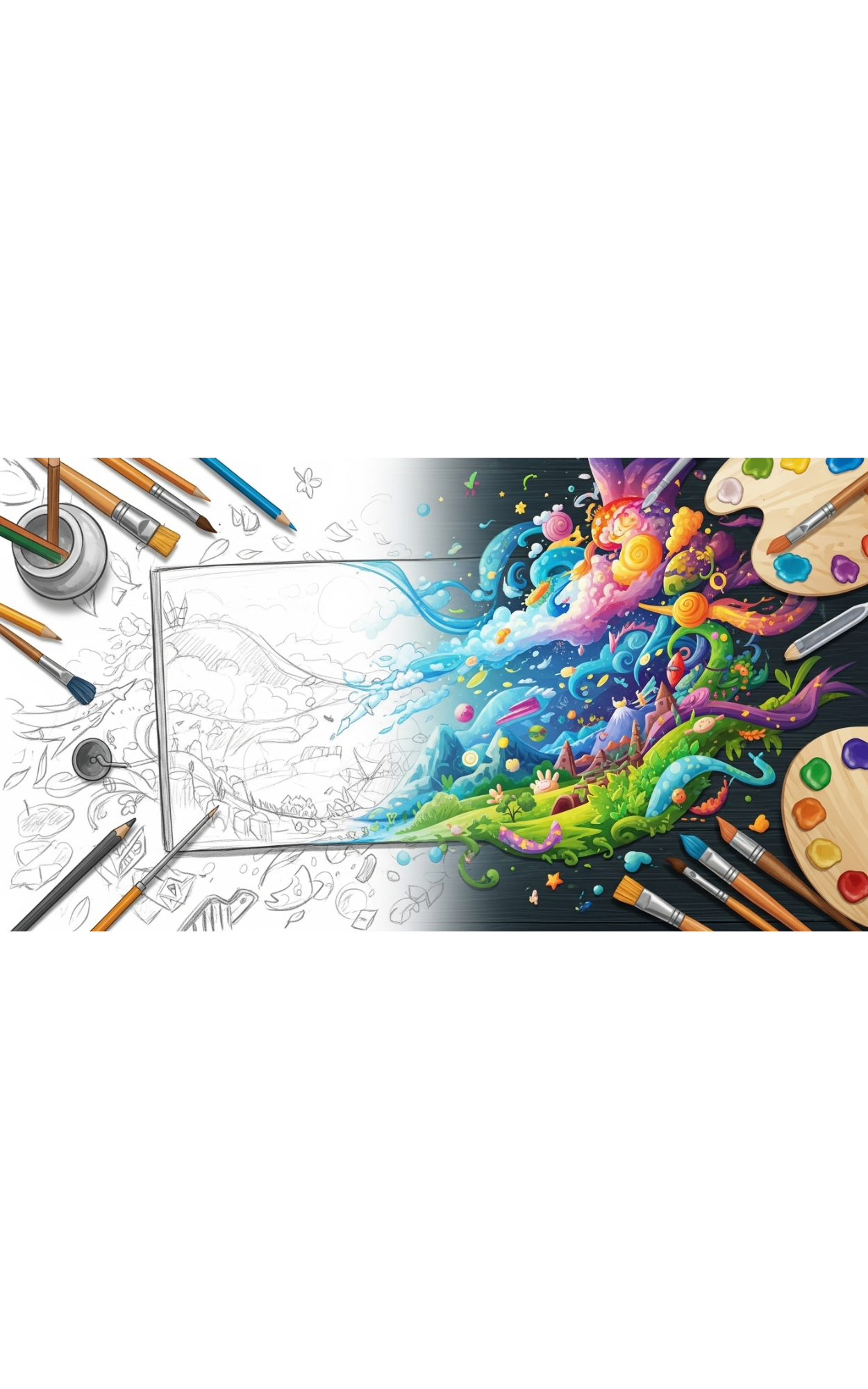

Tooba Siddiqui
Fri Sep 12 2025
8 mins Read
While it is popularly believed that a picture is worth a thousand words, in a children’s book, a picture is actually the whole story. It not only evokes an emotional connection but also builds the basis for lifelong lessons. From transporting the young mind to an imaginary world to helping them learn, a well-illustrated book can nurture values and ideas.
Mini Guide: How to Illustrate a Children’s Book in Different Styles
In short, illustrations are the heart and soul of children's books. However, creating illustrations can be a daunting and thorough process, involving different tools and ideas. The AI-powered tools help reduce the hassles of creating illustrations for authors, illustrators, and educators. With platforms like ImagineArt AI illustration generator, you can turn any story into an animated and well-illustrated story in seconds.
One of the crucial aspects of a children’s book is deciding the illustrative style. The illustration style defines the subject matter, sets the tone, and creates the mood. Here’s a quick breakdown of five different illustration styles:
Cartoon Style Children’s Book Illustrations
It is probably the most common and popular illustration style in children’s books. Cartoonish illustrations are fun, playful, and quite engaging. With bold colors and funky text, these illustrations are ideal for early readers and visual learners with exaggerated reality and humor.
Watercolor Children’s Book Illustrations
It is a completely different medium of its own; watercolor illustrations give children’s books a dreamy and surreal effect. The subdued colors, gentle tones, and hues make these illustrations ideal for bedtime stories. Watercolor illustrations can be combined with other illustrative styles to create a more mystical atmosphere.
Fantasy Storybook Illustrations for Kids
Often referred to as whimsical stories, these illustrations tend to have a more fantastical and far-from-reality feel. Such children’s books are rich with bright colors, unrealistic characters, unreal locations, and magical creatures. Typically based on imaginary worlds, these illustrations are ideal for young readers fascinated by adventures and magical worlds.
Minimalist Illustrations for Toddlers (Ages 0–3)
Featuring a restricted color palette and clean and bold images, minimalist illustrations focus majorly on the learning aspect. It targets young toddlers. The distinct forms and clean lines help toddlers process and understand basic concepts without any distraction.
Comic & Graphic Novel Style Children’s Illustrations
The expressive characters and clean design in these illustrations help children engage and build a connection. Most of these children's books are focused on adventures and superhero tales for older kids. The panel-like layout contributes to fast-paced storytelling, making reading more enjoyable. Most comic books are series-based, keeping the young readers keen and hooked.
How to Illustrate a Children’s Book with ImagineArt (Step-by-Step Guide)
Without a doubt, illustrating a children’s book requires professional sketching and drawing skills. While traditionally, artists and illustrators would be hired for this job, with AI tools like ImagineArt AI illustration generator, anyone can create their own artwork in seconds.
1. Upload Your Story or Scene
Log in to your ImagineArt account and head to ImagineArt AI image generator. In the prompt box, type your story, adjust the settings and aspect ratio, and select your AI image generation model, such as Seedream v3, Dreamina 3.1, Ideogram 3.1, Ideogram character, and more.
2. Choose an Illustration Style
ImagineArt features a variety of illustration styles such as cyberpunk, oil painting, fantasy, comic, pixel art, sketch, and more. Select the style that fits your storyline and tone. You can generate a maximum of 4 variations from a single prompt.
3. Customize Colors, Characters & Mood
Keep your prompts descriptive for precise generation. You can also upload a reference image as style guidance. Describe the features, appearance, color palette, and mood in your prompt and experiment with different AI image generation models.
4. Refine Illustrations
Once your illustration is generated, you can add subtle or strong enhancements for further refinement. You can even upscale the image for more clarity and higher resolution. ImagineArt AI image generator comes with a built-in AI image editor, allowing you to add text overlays, remove background, and add effects and filters.
5. Download in High Resolution
Once satisfied, download the generated image in higher resolution and print it out on your preferred children's book size.
Creative Prompt Ideas for Children’s Book Illustrations
A good children's book illustration doesn’t just add to visual appeal, it also brings together the whole plot. Here are four prompt categories to inspire your next children’s book project.
Animal Adventures
- “A curious fox exploring a magical forest, watercolor storybook style.”
- “A brave puppy sailing across the sea in a tiny boat, adventure picture-book style.”
- “A little elephant learning to paint with colorful brushes, cute cartoon storybook style.”
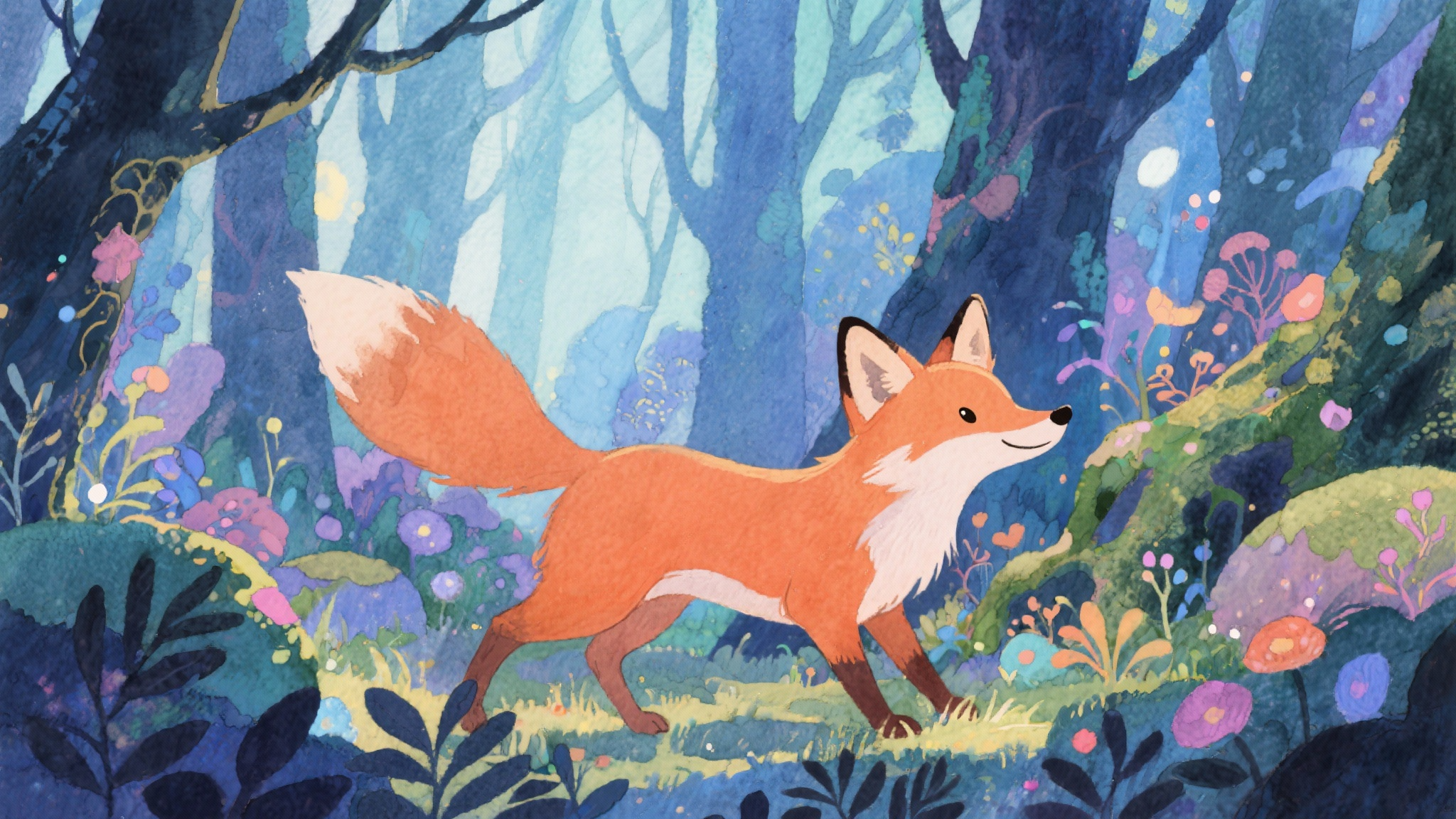 Generated on ImagineArt using Seedream V3
Generated on ImagineArt using Seedream V3
Fantasy & Magical Worlds
- “Two best-friend kids flying on a dragon across the clouds, fantasy anime style.”
- “A magical library where books float in the air, fantasy style.”
- “A unicorn and a child discovering a glowing crystal cave, enchanted fantasy art style.”
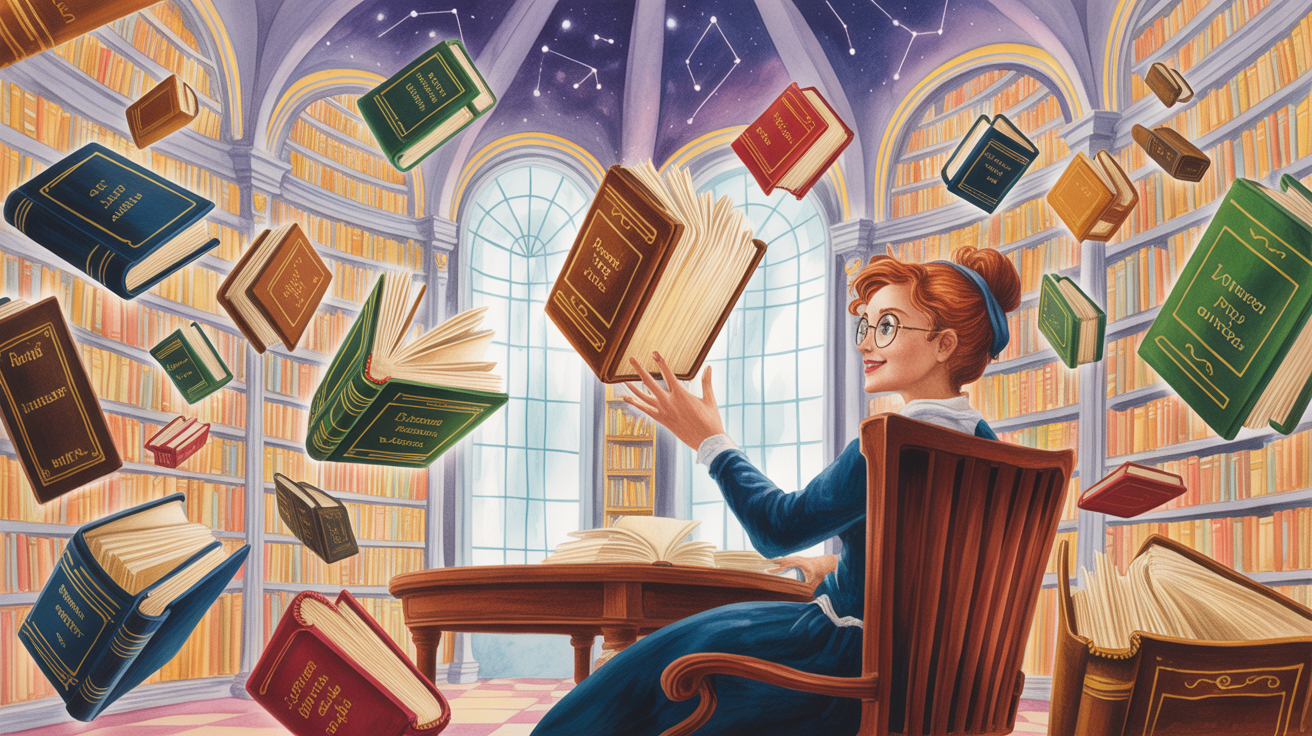 Generated on ImagineArt using Ideogram V3
Generated on ImagineArt using Ideogram V3
Bedtime & Calm Stories
- “A cozy bedtime scene with the moon smiling over a small village, soft calming illustration style.”
- “A little girl holding a glowing lantern in the night, dreamy pastel art style.”
- “A sleepy bear tucked under a quilt in a forest cabin, warm bedtime illustration style.”
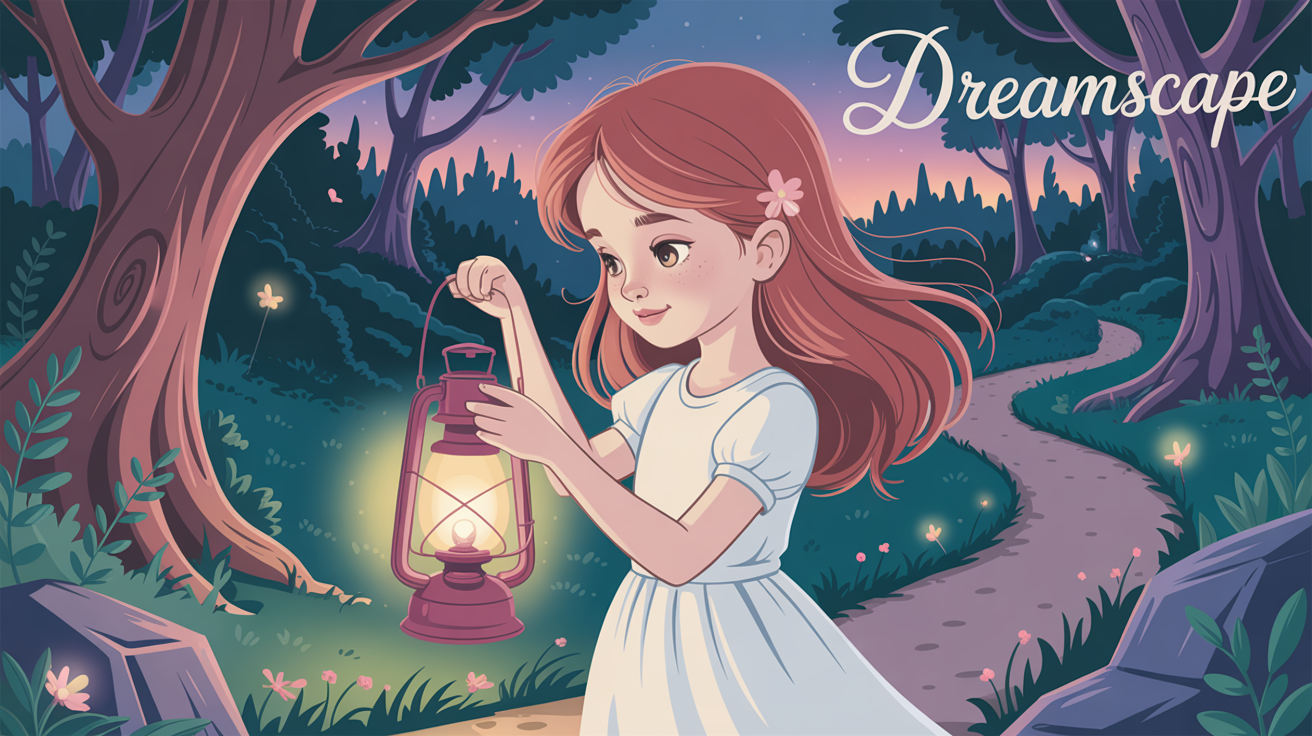 Generated on ImagineArt using Ideogram Character
Generated on ImagineArt using Ideogram Character
Playful & Everyday Fun
- “Happy farm animals dancing together inside a colorful barn, cartoon illustration style.”
- “A boy and girl building a rocket ship out of cardboard boxes, playful comic style.”
- “Children having a picnic under a big oak tree, cheerful cartoon storybook style.”
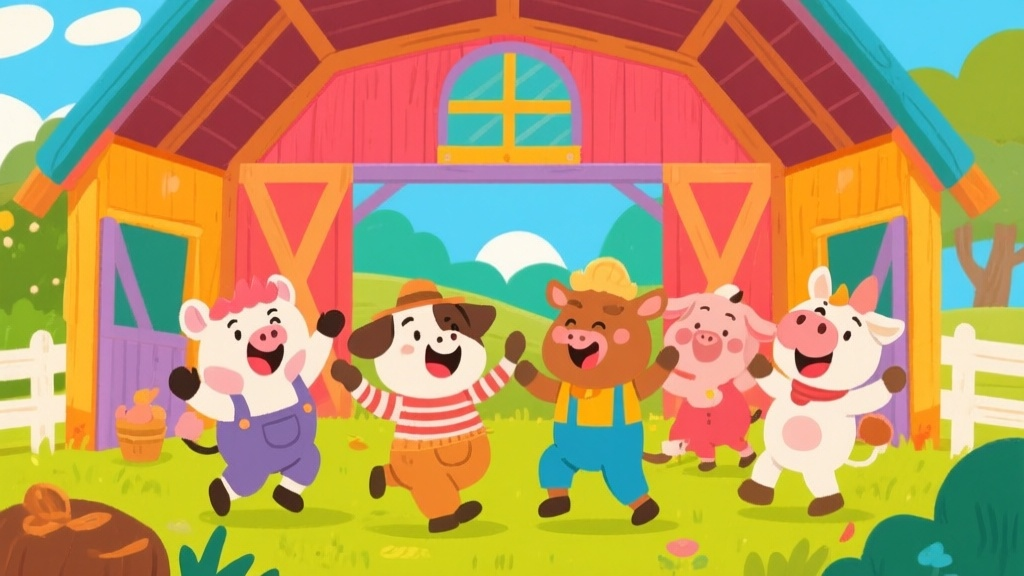 Generated on ImagineArt using Qwen Image
Generated on ImagineArt using Qwen Image
The Mini-Rulebook on How to Illustrate a Children’s Book
Beyond the key considerations of illustration style, audience, and storyline, here are some simple rules to keep in mind for age-appropriate and high-quality children’s book illustrations:
Do’s:
- Children are attracted to brightly colored objects, so make your illustrations vibrant and child-friendly. You can also make them glittery to target and hold the attention of a certain child audience.
- The illustration style should match the storyline and theme of the book. A pencil sketch illustration wouldn’t be a great choice for an adventure book. Softer styles for bedtime stories and books with calming tones, whimsical art for fantasy stories, and comic style for action-packed plots
- Character and scene consistency rivet the children’s attention, helping them relate and build a connection with the character. Keep the hair, features, and overall appearance the same throughout the book.
- Make sure the text is concise and well-aligned with the visuals, making it easier for the young readers to finish the storybook.
Don’ts:
- Make sure not to add too many illustrations on one page. Where many authors follow a multi-illustration layout, overdoing it might confuse and distract the young readers.
- There aren’t many young readers who prefer scary stories, so make sure not to use scary tones and a darker palette unnecessarily.
- Your illustrations should improve the flow of the story, so make sure not to add pages that break the flow mid-story.
Use Cases Beyond Books
Illustrations can serve a diverse range of purposes, from educational material to digital art. Here are five examples of using illustrations beyond children’s books:
Educational & Storytelling Materials
Illustrations can help make lessons engaging and more interactive. Teachers can create slideshows of AI visuals, generate animated flashcards, develop a visual-based class activity, and more. Such lessons and activities help the young minds understand the basics and make learning fun.
Customized Bedtime Stories
Instead of purchasing a new storybook, parents can write and create illustrations for their own bedtime stories. They can even make their own child the main character and write stories that help in instilling values and morals.
Activity Sheets & Coloring Books
A kid in the growing stages needs some activity to keep them busy. Parents and even teachers can create their own coloring pages and activity sheets without having to buy any book. You can create such materials on ImagineArt and download them in high quality.
Posters & Educational Charts
Young kids and even teachers can create engaging posters for different lessons and classroom boards. For teachers, such visuals can keep the students engaged without getting bored. For students, such posters and charts can help them experiment with their creativity.
Personalized Gifts
On ImagineArt, you can create abstract art, illustrated portraits, and personalized storyboards to gift your loved ones. Such designs can also be used as souvenirs or mementos.
Monetization Opportunities
Where children's books are just a fun read for little ones, they can be a great profit generator for the authors. Here's how you can make some cash with such illustrations:
- Self-publishing
- You can create your own illustrated books, coloring pages, and activity books, and sell them on Amazon KDP, Lulu, and other book publishing platforms.
- Learning materials
- You can create flashcards, tracing pages, posters, and charts, and sell them on platforms like TpT as child-safe learning materials.
- Digital products
- You can utilize the illustrations on online platforms like YouTube channels and mobile applications to get more attention from the target audience.
- Merchandise
- You can use such illustrations in wall art, badges, stickers, printed t-shirts, and more to gather the attention of a larger audience.
Quick Tips on How to Illustrate a Children’s Book
Before finalizing your children’s book, ensure that they are formatted in correct dimensions and aligns well with the requirements of the publishing platform.
Formats & Resolution:
- Use 300 DPI for print (books, posters, coloring pages)
- RGB for digital (eBooks, apps, YouTube).
- Save as PNG/JPG for images and PDF for layouts.
Where to Publish:
- For self-publishing: Amazon KDP, IngramSpark
- For photo storybooks: Blurb
- For printables: Etsy
- For educational resources: TpT
File Organization:
- Separate the visuals and text in different files
- Format the children’s book in accordance with the audience type. Use a two-page spread for a cohesive layout and an appropriate page size for better readability.
- Ensure both print-ready and digital copies are similar in text-to-image alignment and page layout.
Start Illustrating with ImagineArt
With AI tools like ImagineArt, you can create a well-illustrated children’s book in no time. Simply prepare your story, jot down the ideas for illustrations, and let AI do all the artistic work. Try ImagineArt AI illustration generator to visualize your magical stories.
Get know about creative book cover ideas for your children's book

Tooba Siddiqui
Tooba Siddiqui is a content marketer with a strong focus on AI trends and product innovation. She explores generative AI with a keen eye. At ImagineArt, she develops marketing content that translates cutting-edge innovation into engaging, search-driven narratives for the right audience.